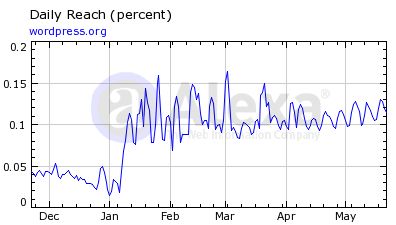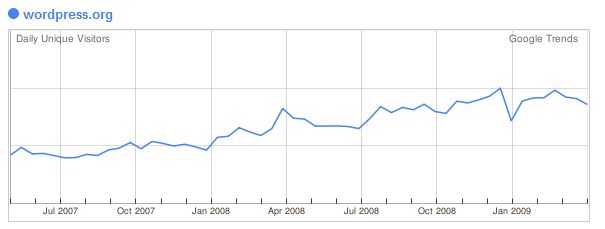How to find out site traffic from Alexa
The question we often ask ourselves is: how can we estimate the number of visits to a website? PageRank, represented by a green bar on Google's toolbar, is far from reflecting the site's traffic. To be better informed, you need to go further and install the Firefox Search Status extension. It is displayed at the bottom. On the right, see the Alexa indicator, which shows the position of the site on the Internet.
Updated December 9, 2021: Alexa.com closed as of May 1, 2022.
What is Alexa?
Alexa is a search engine that records visits to each website from its toolbar, which therefore must be installed on users' browsers. The displayed statistics are updated weekly.
Using Search Status, you can find out the position of a website on the Internet by hovering over the blue bar. Displays a numeric value that is a rating of a website on the Internet. For more details, go to the Alexa website, click on "Traffic Ranking" at the top of the screen, enter the domain name and click on "Get Details."
Alexa is also behind the archives.org, which eventually stores all websites, and was acquired by Amazon in 1999.
How to interpret the numbers given by Alexa?

The search status displays a blue bar representing the average position for the last three months. This is the main number and is listed first on the Alexa website.
This figure is the geometric average number of visitors and the number of page views.
Then the width of the page is occupied by a graph for which we can determine the period (six months in the example below), and which represents variations in position. The ordinate figure is the percentage of website visits on the Internet. By specifying multiple site names, you can compare curves.
Three tables are then created over three periods: the last day, the last week and the last three months (here we find the figure given at the top of the page), also showing variations from the previous three months.
The last column shows the difference between the ranking for the last three months and the ranking for the previous three months.
The first table shows the percentage of Alexa toolbar users who visited the site.
The following table shows the position of the site on the Internet based on traffic.
The last table shows the number of page views per visitor for the same periods.
It then gives the origin of visitors by country as a percentage of total visits, position by country, and distribution by subdomain, if any.
Website Traffic Score
Traffic is a logarithmic function of position. In fact, to get closer to the top rating, traffic must increase exponentially. To go from ranking 400,000 to ranking 200,000, for example, traffic should not double but triple (this is an example, not an exact ratio).
In fact, in order to correctly assess traffic, you need to have site statistics with the same ranking. However, the comparison is only valid if both sites are highly rated.
Alexa cannot be used when buying a site based on traffic, because it is very easy to manipulate these numbers, either by frequently visiting a site with an Alexa panel installed or using a script. Instead, we should ask the person selling the site for access to the statistics to assess them, and we should check the origin of the traffic.
System limitations
According to the search engine Alexa itself, the values provided are the more relevant the greater the number of visitors. Moreover, only the top 100,000 sites have a displayed graph because values below this level are considered unreliable.
Moreover, the statistics come from the qich toolbar that needs to be set. A topic can have an impact. Certain categories of Internet users more often use the Google toolbar and more often visit certain sites whose position will be underestimated.
In fact, the Google manager indicated that, in his experience, Alexa's numbers are biased due to the fact that many webmasters install the Alexa toolbar. Its own site, aimed primarily at webmasters, therefore displays non-reality traffic.
Thus, the graph primarily allows you to compare sites within the same topic.
Revival or algorithm change?
Having done a comparison of CMS popularity using Alexa's siteinfo tool, I came across a conundrum: the extraordinary resurgence in popularity of certain sites in January 2009 (late March for some), as if they had all left the sandbox at the same time!
WordPress example:

We see the same effect with Drupal, Joomla and phpBB.
It's Google's algorithm that's suddenly changed, or rather... Alexa's algorithm? To find out, I continued my research, this time with the Google Trends tool for websites (this service is now closed).

No more leaps forward in January this time! These wins can be explained by error correction or algorithm modification.
But as A.E. Van Vogt's native General Semantics likes to repeat, the map is not territory, and Alexa's schedule does not change traffic on the site!